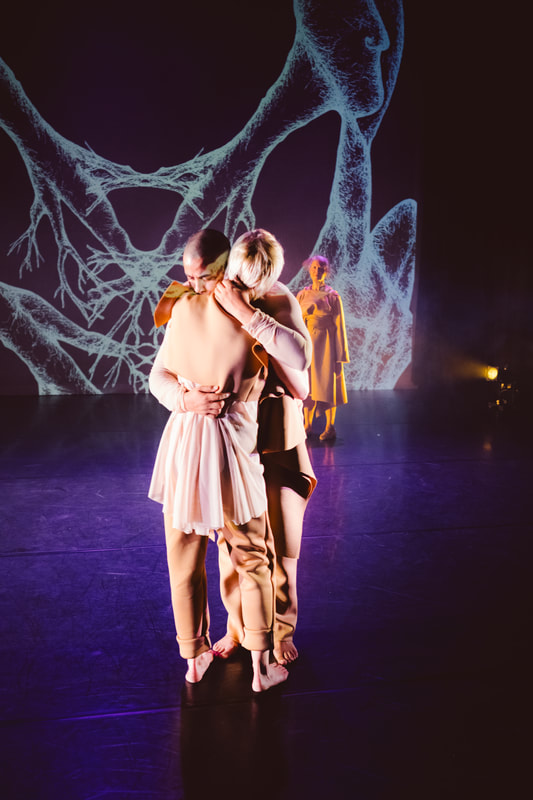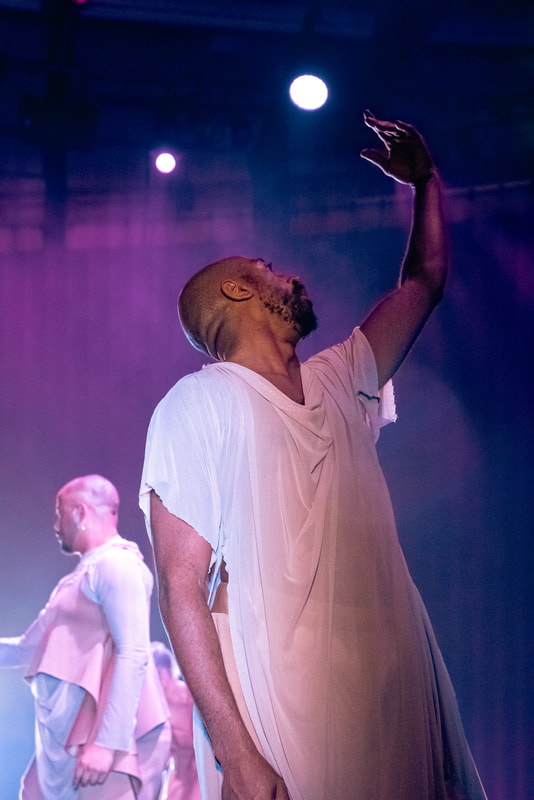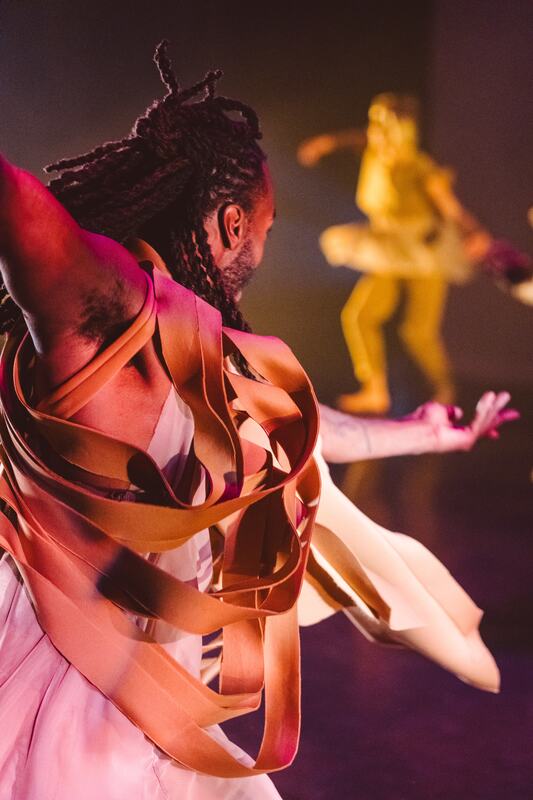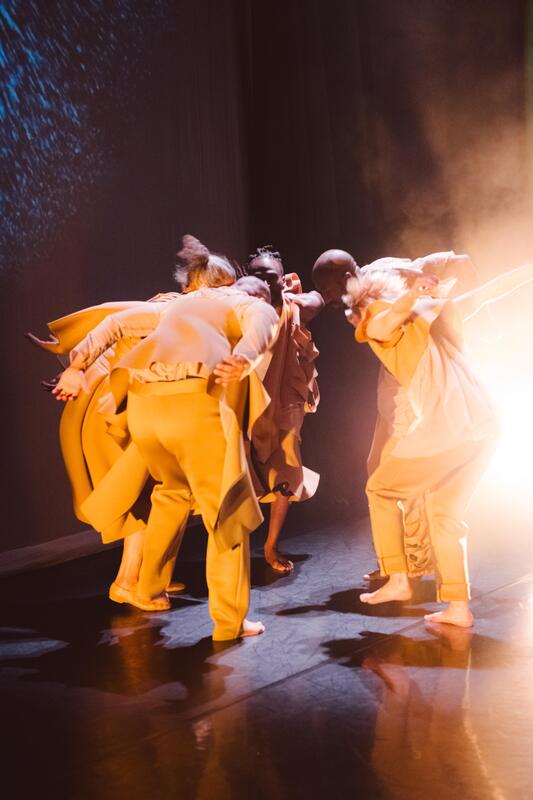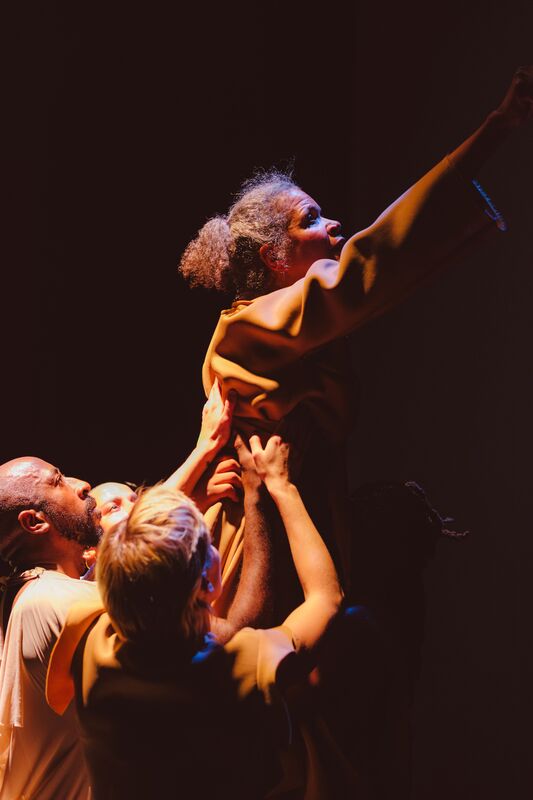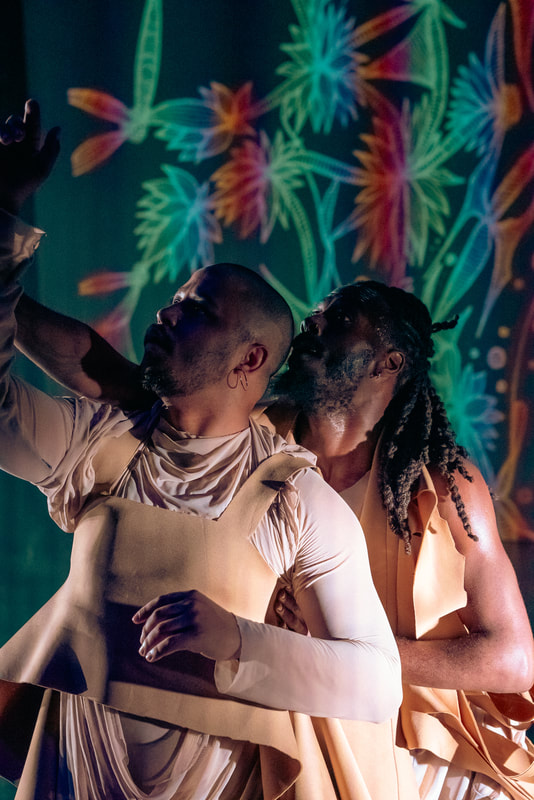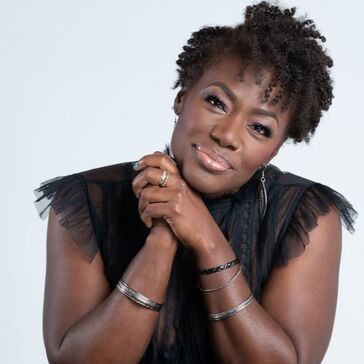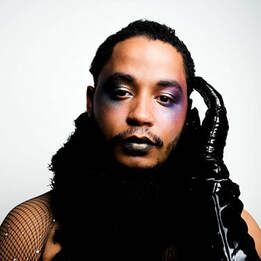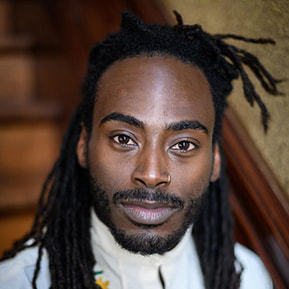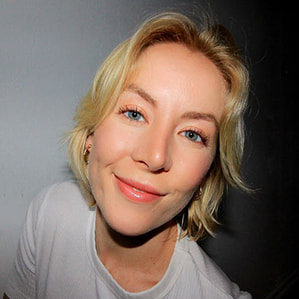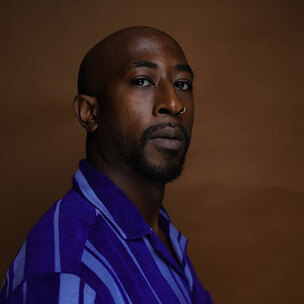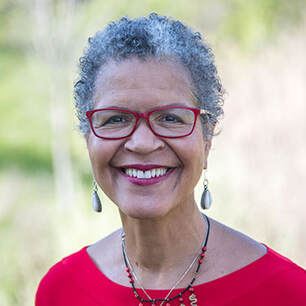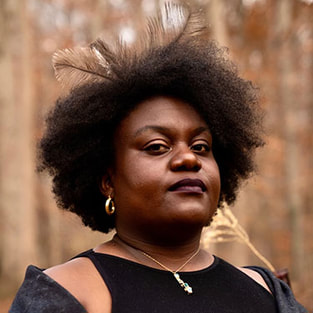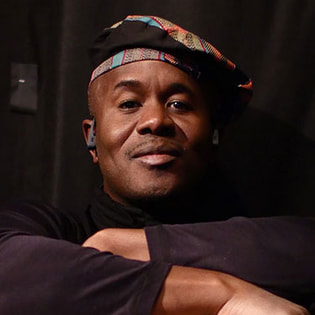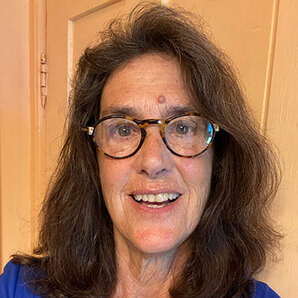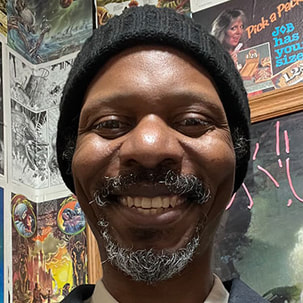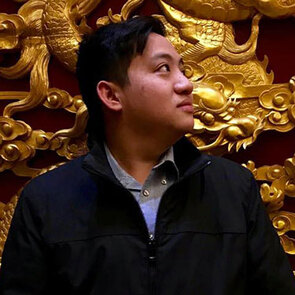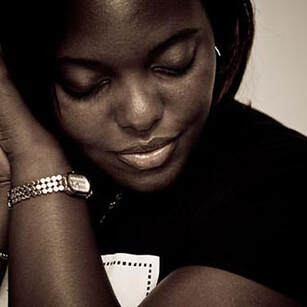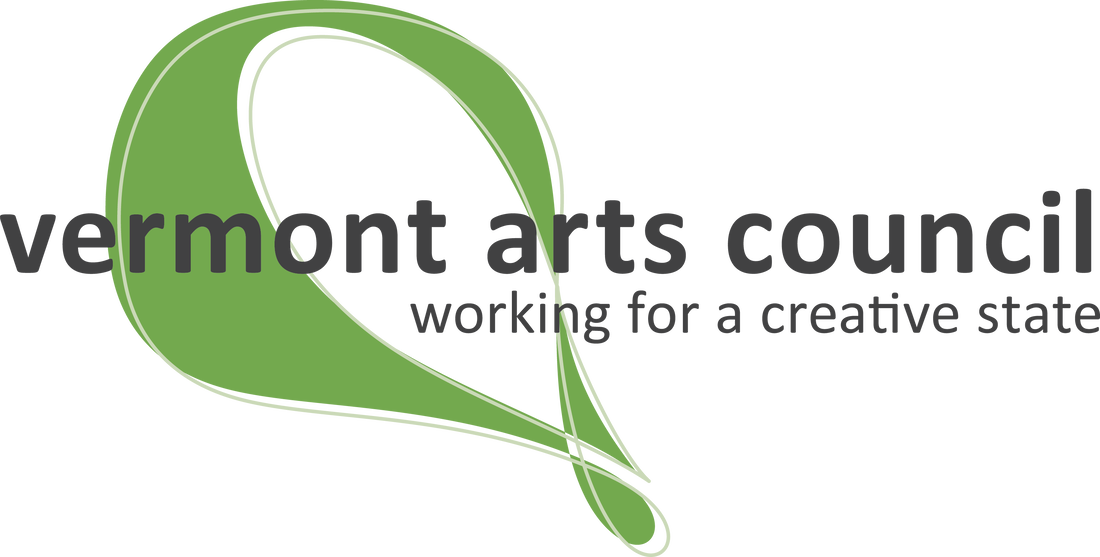WHAT WE ASK OF FLESH
What We Ask of Flesh (WWAOF) is an evening-length dance and installation by choreographer Christal Brown inspired by the writings of poet Remica Bingham-Risher, Brown’s caregiver journey with Alzheimer’s and dementia, and her explorations of legacy. In this work, the artists’ bodies become instruments that question, connect and dismantle the tangible and intangible histories present in us all. Connecting personal narratives from the cast, a live soundscape by Farai Malianga and Deborah Felmeth, media design by Scotty Hardwig, costumes by Trebien Pollard, lighting by Jennifer Fok, and the world-building of dramaturg Arielle Brown, WWAOF is a physical examination of the capacity of human life and the intricacies of the mind. It will premiere November 9–11, 2023, at Middlebury College, VT.
Seeing Flesh as the veil between the world and the soul, Brown and her company explore what people hold, relinquish and collect to create an identity. WWAOF is about navigating the spaces between our internal and external existence. The work merges Brown’s eclectic movement vocabulary, experiential research through movement and interviews, neuroscience, and the literature of black futurist scholars to build an ephemeral experience of spirit, flesh and soul.
Compassion, Curiosity, Survival, Violence, Love, and Flesh are the primary pathways embodied by each dance artist. As they intersect, they build a tapestry of memory, loss and identity through physical jubilation and vocal improvisations that evolve from quiet, intimate duets to full-bodied dynamic ensemble dancing. Hardwig’s black and white projected illustrations create a mythical, geometric world that supports the folding and unfolding of time and space. The soundscore reflects and responds to the complexity of shifting identity, while establishing a whimsical environment of call-and-response, through drums, vocals, piano, electronic looping and distortion.
The work ends with a resounding “Yes!” by the Flesh character, giving way to the creation of other worlds and the releasing of all we carry. After watching a rehearsal of WWAOF, revolutionary writer Julia Alvarez shared a Wallace Stevens quote: “After the final no there comes a yes. And on that yes the future world depends.” This encapsulates the completion of a soul’s journey illustrated in WWAOF.
WWAOF’s premiere and tour include an interactive installation that provides audiences inroads into the project’s iterative process. Displays include rehearsal videos and interviews with the collaborators; hanging scrolls featuring the dancers’ writings; a spiritual practice of ancestor plates, an offering of nourishment to our past, present and future selves; and a tarot deck designed during the creation of WWAOF using Hardwig’s illustrations and the cast’s writings. Audiences are invited to write and draw their memories and ancestors’ names on a scroll that will travel to each venue, creating a tapestry of collected memory.
Artistic Director / Choreographer: Christal Brown
Movement Artists: Alex Diaz; Orlando Hunter; Malcolm McMichael; Claudia-Lynn Rightmire; Ricarrdo Valentine; Robin Wilson
Dramaturg: Arielle Brown
Composers / Musicians: Farai Malianga; Deborah Felmeth
Media Design: Scotty Hardwig
Costume Design: Trebien Pollard
Lighting Design: Jennifer Fok
Poetry: Remica Bingham-Risher
Seeing Flesh as the veil between the world and the soul, Brown and her company explore what people hold, relinquish and collect to create an identity. WWAOF is about navigating the spaces between our internal and external existence. The work merges Brown’s eclectic movement vocabulary, experiential research through movement and interviews, neuroscience, and the literature of black futurist scholars to build an ephemeral experience of spirit, flesh and soul.
Compassion, Curiosity, Survival, Violence, Love, and Flesh are the primary pathways embodied by each dance artist. As they intersect, they build a tapestry of memory, loss and identity through physical jubilation and vocal improvisations that evolve from quiet, intimate duets to full-bodied dynamic ensemble dancing. Hardwig’s black and white projected illustrations create a mythical, geometric world that supports the folding and unfolding of time and space. The soundscore reflects and responds to the complexity of shifting identity, while establishing a whimsical environment of call-and-response, through drums, vocals, piano, electronic looping and distortion.
The work ends with a resounding “Yes!” by the Flesh character, giving way to the creation of other worlds and the releasing of all we carry. After watching a rehearsal of WWAOF, revolutionary writer Julia Alvarez shared a Wallace Stevens quote: “After the final no there comes a yes. And on that yes the future world depends.” This encapsulates the completion of a soul’s journey illustrated in WWAOF.
WWAOF’s premiere and tour include an interactive installation that provides audiences inroads into the project’s iterative process. Displays include rehearsal videos and interviews with the collaborators; hanging scrolls featuring the dancers’ writings; a spiritual practice of ancestor plates, an offering of nourishment to our past, present and future selves; and a tarot deck designed during the creation of WWAOF using Hardwig’s illustrations and the cast’s writings. Audiences are invited to write and draw their memories and ancestors’ names on a scroll that will travel to each venue, creating a tapestry of collected memory.
Artistic Director / Choreographer: Christal Brown
Movement Artists: Alex Diaz; Orlando Hunter; Malcolm McMichael; Claudia-Lynn Rightmire; Ricarrdo Valentine; Robin Wilson
Dramaturg: Arielle Brown
Composers / Musicians: Farai Malianga; Deborah Felmeth
Media Design: Scotty Hardwig
Costume Design: Trebien Pollard
Lighting Design: Jennifer Fok
Poetry: Remica Bingham-Risher



